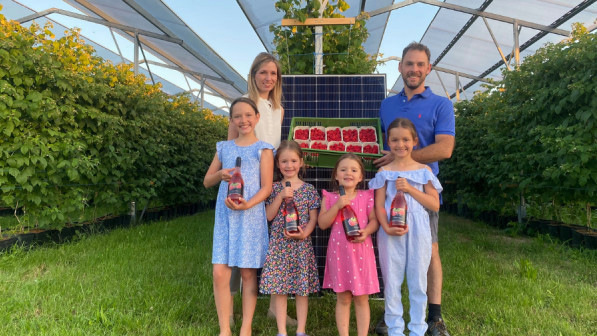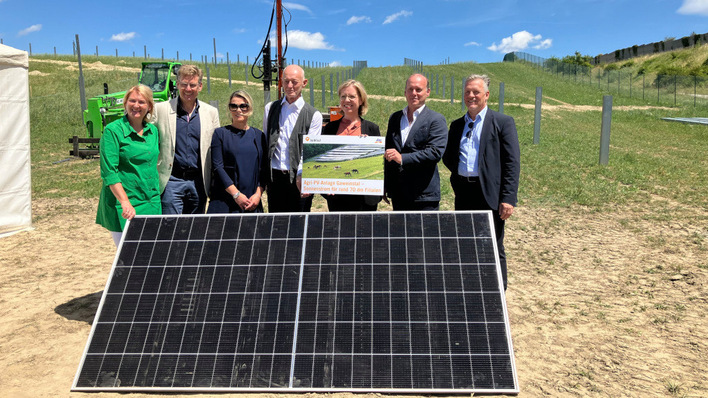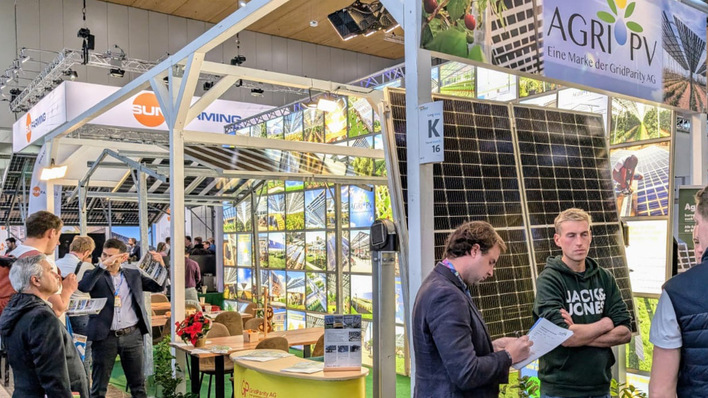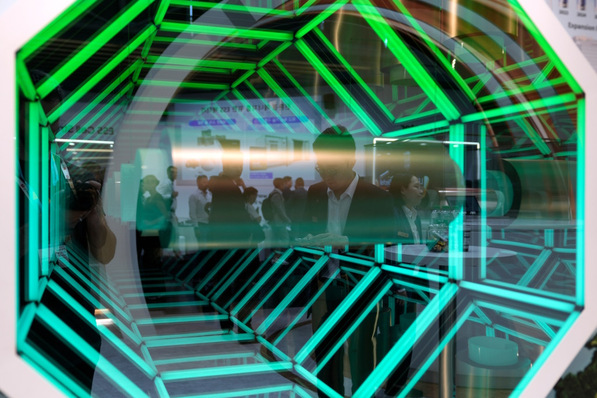The EU’s objectives are ambitious: The total solar energy deployment is to reach around 750 gigawatts (GW) by 2030. In this context, dual land use concepts, especially agricultural PV, are gaining importance. According to a study by the German Energy Agency dena, thanks to funding programs and dedicated legislations, agricultural PV is facing a massive market ramp-up in Europe. At the same time, the applied research into agricultural PV is coming along in leaps and bounds, and the number of projects is rising. At Intersolar Europe, visitors will have the opportunity to see a varied range of technologies, products and solutions, and to gain deeper insights into best practices and the latest developments. Intersolar Europe will take place from June 19–21, 2024 as part of The smarter E Europe, the continent’s largest alliance of exhibitions for the energy industry, in Munich. The event will be flanked by the three exhibitions ees Europe, Power2Drive Europe and EM-Power Europe.
Agriculture or renewable sources of energy – in the past, it was either, or. Agricultural PV is a new, innovative approach offering promising options for agriculture and climate protection by joining agricultural production and the generation of electricity on the same surface. Thanks to agricultural PV, photovoltaics and photosynthesis are no longer in competition, but complementing each other.
Extensive subsidies at a national level within the EU
European countries such as Germany and France subsidize agricultural PV with the aim of deploying more solar energy while reducing the competition for land use. Germany has introduced a separate auction segment with a top value for “special solar installation” (which includes agricultural PV installations) in the Solar Package 1, and France is deemed one of the pioneers for dedicated legislation. Other countries, such as Austria and the Netherlands, also promote their agricultural PV sector. Despite all of this progress, there is no all-European legislation, and that makes matters cumbersome for international investors and project developers.
Benefits of agricultural PV
To exploit agricultural PV’s full potential, harmonized legislation will be indispensable in the medium term. The advantages of dual land use are obvious: It reconciles solar energy with agriculture, and the protection against storm, hale, frost and draught adds an extra bonus for farmers. The electricity production costs are lower than from small roof-mounted installations, and farmers’ income is diversified. Shading and wind protection provided by solar panels reduces evaporation, and innovative solar panels have been developed that also collect rainwater for irrigation. This can benefit farming operations by boosting their resilience against crop failure.
Many different applications
The applications of agricultural PV range across many different agricultural uses, including horticulture, viniculture, arable land and even pastures. The potential of agricultural PV is particularly obvious in horticulture and viniculture, where it can increase the yield of certain plants. In southern Europe in particular, where climate change is palpable, berries, grapes and olives can benefit from the technology. Fruit and fruit vegetables can still produce the same yields even if there is some minor shading from solar panels. A study by Iliotec and Fraunhofer ISE has identified new options for many arable crops, such as rapeseed, celery, onions and cabbage. When it comes to plants that are particularly sensitive to shading, it is important to pay attention to the width of plant rows. On pastures, agricultural PV modules can protect animals against wind and precipitation, improving their wellbeing.
Best practice projects in Europe
Pilot projects are emerging all over Europe. In the Dutch local authority of Meierijstad, for example, BayWa r.e. AG and their subsidiary GroenLeven are implementing a pioneering agricultural PV project, a 8.7 megawatt peak solar installation covering a vast raspberry plantation. On Sicily, figs and olives grow between the module rows of Europe’s largest agricultural PV plant, which has a capacity of 135 megawatts (MW). In Neißeaue, Germany, Next2Sun Technology GmbH works on a 20 MW solar farm with vertical modules, while Vattenfall are constructing a major agricultural PV project with 79 MW and a single-axis tracking system on 93 hectares of a free-range organic egg farm in Tützplatz, Germany.
Special attention on agricultural PV
Intersolar Europe, the world’s leading exhibition for the solar industry is putting a particular focus on agricultural PV in 2024. A special exhibit in the Outdoor Area will be dedicated to the topic. Partners of the special exhibit are BayWa AG, BayWa r.e., Conexio PSE, Vista Geo and ZIMMERMANN PV-Steel Group. Among other things, the companies will be presenting tracking systems for agricultural PV applications. What’s more, of the more than 1,370 Intersolar Europe exhibitors, some 60 exhibitors will be showcasing agricultural PV products and solutions. Experts will dive deeper into the topic and offer even wider information at a number of sessions at the Intersolar Forum and the Intersolar Europe Conference.
Also interesting: Finalists of The smarter E AWARD 2024 announced
Intersolar Europe and the parallel events ees Europe, Power2Drive Europe and EM-Power Europe will take place from June 19–21, 2024 as part of the innovation hub The smarter E Europe, the continent’s largest alliance of exhibitions for the energy industry, at Messe München. (hcn)








